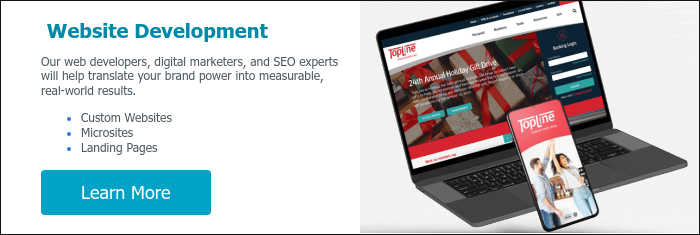The Hidden Costs of Page Builders: Short-Term Gains, Long-Term Pains
Streamworks Blog
.jpg?width=5824&height=3264&name=Shutterstock_2425426569%20(1).jpg)
While page builders offer an intuitive interface that can seem like a dream come true for non-technical users, their simplicity can mask potential long-term challenges. While they might appear to eliminate the need for web developers, web designers and developers are crucial for building a website that looks good, performs well, and supports broader digital marketing goals.
The Drawbacks of Page Builders
These pre-designed templates, while convenient, can limit your creativity and make your website look generic.
Lack of Customization
Page builders offer limited options for tailoring elements to match your brand's aesthetic perfectly. You might compromise on colors, fonts, and layouts to fit the template's constraints.
Generic Look and Feel
A widely available page builder template can make your website indistinguishable from countless others. This can dilute your brand's impact and make it harder to stand out in a crowded online marketplace.
Inflexibility
As your brand evolves, you might discover that the page builder's structure no longer aligns with your vision. Making significant changes can be time-consuming and frustrating.
Ultimately, while page builders can be a valuable tool for rapid prototyping and simple websites, they should not be seen as a replacement for skilled web designers and developers.
The Power of Custom Development
Custom blocks and global style sheets allow you to craft a unique, on-brand website experience. By building your design system, you can ensure that every element reflects your brand's personality and values.
Beyond the Visual Editor
When considering digital advertising and email marketing, the ability to track results and conversions becomes paramount. Page builders often restrict access to the underlying code, making it difficult to implement the tracking pixels, scripts, and other elements required for effective marketing campaigns.
Tracking Challenges
Many page builders hinder the placement of essential tracking codes in specific locations, making it challenging to accurately measure the performance of different marketing channels.
Conversion Optimization
A/B testing and conversion rate optimization (CRO) often require granular control over page elements. Page builders might limit your ability to make the necessary changes efficiently.
Email Marketing Integration
The limitations of page builders can hinder seamless integration with email marketing platforms, making it difficult to capture email addresses and build targeted campaigns.
The Statistics
- Customization Limitations: A survey conducted by WP Engine found that 62% of respondents felt constrained by page builders' customization options.
- Generic Design Impact: Research from Adobe indicates that 38% of people will stop engaging with a website if the content or layout is unattractive.
- Conversion Rate Optimization: According to a report by HubSpot, businesses that implement A/B testing see a 20% higher conversion rate than those that don’t.
- Tracking Implementation: Data from MarketingSherpa reveals that companies using advanced tracking systems see a 15% increase in marketing ROI compared to those using basic systems.
Conclusion
While page builders can be a tempting shortcut, they often come with trade-offs that can negatively impact your website's performance, maintainability, and brand identity. By carefully considering your long-term goals and investing in custom development, you can create a website that represents your brand and delivers exceptional results.




